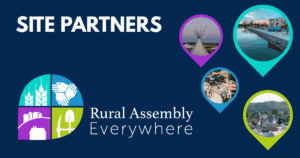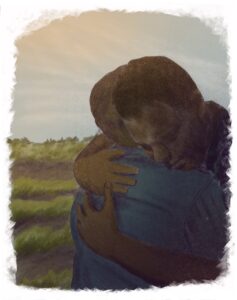Kim Phinney (Senior Fellow at Rural Strategies) and Adam Strong first connected when Adam was selected to participate in a meeting with Secretary of Education, Arnie Duncan, Deputy Assistant Secretary for Rural Outreach, John White and other key staff to hear about the unique challenges facing rural and Native opportunity youth in pursuing educational and career pathways. Adam then went on to be selected as a member of the national council of young leaders with Opportunity Youth United. As a result of his demonstrated leadership, Adam was invited to attend the 2015 Rural Assembly and participated in the Young Leaders Day for rural young professionals. During that event, he served as a panelist on the 2015 congressional briefing on rural childhood poverty hosted by the Rural Assembly. Adam also participated in the 2017 Rural Assembly’s Big Ideas Forum. Adam, a native of rural Kentucky, is a strong rural advocate, passionate about ensuring the representation of rural youth voices, issues, and perspectives on a national stage. He has joined Kim and steering committee member, Kathy Moxon numerous times to staff rural youth events and speak on rural youth issues. We are thrilled to have Adam join the staff team in April, for the upcoming Rural Youth Assembly Summit.

Growing up in rural Appalachia I know the value National Service represents to communities like mine. I grew up in Southeastern Kentucky and with the decline of the coal industry my community, like many across rural America, my hometown is trying to revitalize our economy. At the same time, we are facing challenges such as food insecurity and an ever-expanding opioid epidemic.
I left Southeastern Kentucky not to leave my community behind, but so that my community would not get left behind. Since 2012, I have been part of cross-sector conversations with legislators, policymakers, philanthropists, nonprofits, local advocates, research organizations, and even big corporations, working to shift the narratives and return the power back to the communities. During this time, I quit my job working at a hospital, started graduate school in public policy, and moved to Washington, D.C. If you are ever roaming the halls at the Capitol, you’ll probably find me slipping behind closed doors to attend public meetings to uplift and advocate for rural communities.
For the past several months I have been collaborating and working with rural advocates, leaders, and experts across sectors as part of a Rural Policy Advisory Council to increase access to and the scale of national service opportunities. National service offers a powerful strategy that enables communities to enlist community members in solving local challenges in a way that builds their skills and the capacity of the community to facilitate and support a leadership pipeline of solutionaires. As the Rural Policy Advisory Council, we were tasked with creating policy recommendations that would increase opportunities across rural and tribal communities by giving them equal access to National Service opportunities at scale. Most recently, I helped lead a briefing on national service and rural communities on Capitol Hill.
The briefing gave us an opportunity to showcase our recommendations and highlight potential issues rural communities face that could be in part addressed by national service at scale. It was powerful and hopeful to see elected officials and staffers show up to support national service at scale and to learn more about how national service is a powerful strategy to address challenges in rural communities.
During the briefing I highlighted three significant challenges in rural America that national service could help address:
- Food Insecurities. When I was younger, I volunteered at Helping Hands food pantry almost every week as part of my AmeriCorps service experience back in 2011. Every month the food pantry would run out of food boxes because more families came in need than they could serve. Having service members volunteering to make food boxes and doing some of the days to day activities frees up the Director’s staff time so they could write more grants and cultivate more individual donors. Service at scale can help support food pantries across America to tap into the national and local resources they need to help ensure no family gets turned away for food.
- In rural and tribal communities across America, our infrastructure is crumbling, and many communities like mine cannot support public transit because of the vast distances of our geography and our low population densities and tax base. However, AmeriCorps Vista is a powerful strategy that could help address transportation needs in many rural and tribal communities. The Maroon Volunteer Center AmeriCorps VISTA Project at Mississippi State University connects volunteers with opportunities to provide transportation assistance to low-income individuals.
- Aging/Disability Assistance. Rural America is aging, and older adults and individuals with disabilities generally, prefer to live in their own homes but may need assistance with daily tasks as well as occasional companionship. Timebanks, managed by AmeriCorps VISTAs, enable individuals to provide mutual support on an equal hour for hourly basis— for example, an hour cooking in exchange for an hour of driving.
National service at scale is an important strategy because rural and tribal communities have historically been unable to access these funds at the same level as larger urban centers due to local constraints and policy requirements that put them at a disadvantage. For too long, rural people have not been valued as civic actors, assets, or experts of their own communities and have not had the resources to shape their future.
You can learn more about the Rural Policy Advisory Council’s specific policy recommendations and read more examples of how national service at scale could address local rural and tribal issues by reading our white paper here. I would like to give huge thanks to Service Year Alliance and Partners for Education based at Berea College for co-leading the council and this transformational work.







